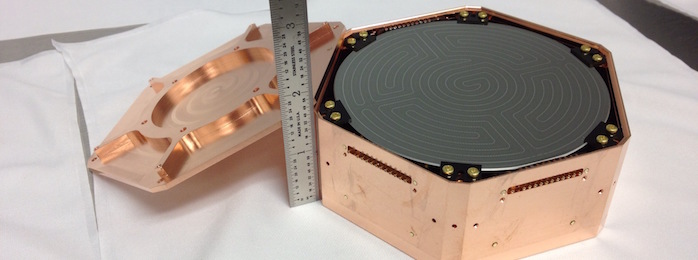Athermal Detectors

To thermalize or not to thermalize; that is the question
For dark matter direct detection searches, the resolution of the detector is not as important as its mass. The more atoms available to interact with dark matter, the better. But the larger the mass, the larger the heat capacity, and a larger heat capacity degrades energy resolution. You can operate the detector at a lower temperature to lower the heat capacity down, and that is the strategy employed by the CUORE and EURECA collaborations (we also the same strategy for our CUPID and Ricochet neutrino detectors). The CDMS collaboration developed the Quasiparticle-assisted Electrothermal-feedback Transition-Edge Sensor, or QET, in order to perform an athermal measurement of the recoil energy deposited in an event. An athermal measurement effectively decouples the heat capacity of the absorber (also called the "target") from the detector heat capacity, and also has faster time constants since you measure the energy of the ballistic phonons before they thermalize in the target crystal. An added benefit is that athermal phonons give you position information on the event, which allows you to fiducialize the volume and reject events near the surfaces of your detector. Both techniques have been shown to work, and although they have different optimizations, both thermal and athermal designs have been sucessfully deployed in dark matter searches.

QET principle of operation
The illustration above shows the main elements of the QET design. A crystal germanium or silicon absorber is held at low temperature (around 50 mK). On its surface are the QETs, which are composed of aluminum collection fins (shown in grey) connected to a TES (shown in light blue). The aluminum collection fin is superconducting at these temperatures, while the TES is biased and is thus in its transition. When a recoil event happens (labeled interaction site) phonons with a spectrum way out of equilibrium with the 50 mK crystal temperature propagate from the interaction site across the crystal. These athermal phonons anharmonically decay until they become ballistic, meaning that their mean free path is longer than the dimensions of the crystal. At that point, the phonons are still athermal, but rattle around the crystal as particles in a box. Phonons hitting aluminum collection fins are absorbed into them and break cooper pairs inside the superconductor, producing quasiparticles. These quasiparticles diffuse through the aluminum and make their way to the TES, where they release their energy and heat the TES up, producing a detectable signal. The reason for this complicated path is that the aluminum acts like a catcher's mitt to collect phonons, so that we can keep the heat capacity of the TES small (and thus retain good energy resolution) and at the same time have a significant fraction of the surface area of the crystal covered by phonon-collecting material.
Electron/nuclear recoil discrimination
In addition to the QETs, our dark matter detectors are connected to charge sensors to read out electron-hole pairs that are released during the recoil. The ratio of charge to phonon signals is different for nuclear recoils and electron recoils, and forms the main discriminator of bulk gamma events in our detectors.
